Japanese Komatsu Type 96 armored personnel carrier
Japanese Type 96 armored personnel carrier armed with an M12,7 HB 2-mm machine gun
For many years, Japanese self-defense forces have been armed with mainly tracked vehicles, in addition to the Komatsu Type 87 6x6 reconnaissance vehicle and the Type 82 6x6 operating control vehicle, which have a high level of uniformity. The production of both of these options is complete. As in the case of the rest of the Japanese armored vehicles, Japan did not sell their cars abroad.
The main contractor for the Type 96 armored personnel carrier is Komatsu Defense Systems Division, which also developed and manufactured the Type 87 6x6 reconnaissance and patrol vehicle, which is still in operation.
The first production Type 96 BTRs were manufactured in the 1995 year, roughly 55 machines were made by the end of the 1999 year, and since then production continued with an annual volume from 31 machines in the 2003 year to 14 machines in the 2004 year. According to estimates, from the beginning of deliveries to the 2009, about 270 Type 96 machines were supplied, but in 2010, 17 machines were manufactured and 2011 11 machines in the year. In total, 322 machines have been manufactured in all years.
The BN Type 96 all-welded hull is made of armored steel, the engine-transmission compartment is located in front of the left. The exhaust pipe of the exhaust system is located on the left side of the hull roof.
The driver is located in front of the right, he has a hatch with a solid cover that opens back and three day periscopes for the front view. The central periscope can be replaced by an illumination periscope for driving at night.
The commander / gunner sits behind the driver, he has a raised turret with daytime periscopes for all-round visibility, the hatch cover opens back. In front of the turret installed 12,7-mm machine gun M2 HB, from which it is possible to aim and shoot from inside the turrets. Later, some machines were equipped with a locally produced 40-mm automatic grenade launcher.
The troop compartment is located in the rear part of the vehicle, eight paratroopers land and disembark through the aft ramp with a power drive. On the roof of the troop compartment, there are five hatches that open outwards, two on the right and three on the left. On each side of the troop compartment there are at least two fire embrasures and corresponding viewing instruments.
On the roof of the troop compartment closer to the stern on each side are installed four forward-facing smoke grenade launchers.
Standard equipment of the machine includes power steering on the front four wheels, a centralized wheel inflation system that allows the driver to adjust pressure depending on the type of terrain to be overcome, a system of protection against weapons of mass destruction and a laser warning system installed in the front left. A similar system is installed on other Japanese armored vehicles, for example tanks Type 90.
Option RCB intelligence
Japan also developed a radiation, chemical and biological reconnaissance vehicle based on the Type 96 8x8 chassis. It is equipped with a set of sensors and sensors, as well as a meteorological station, a self-disinfecting system and an integrated air purification unit.
Specifications of Type 96 armored personnel carrier
Crew: 2 + 8
Length Overall: 6,84 M
Width, overall: 2,48 m
Height, overall: 1,85 m
Combat weight: 14500 kg
Configuration: wheeled, 8x8
Engine: Mitsubishi 6D40, diesel, water cooling, 6 cylinders, hp 360
Maximum speed: 100 km / h
Power reserve: 500 km
Armament: 12,7-mm machine gun M2 HB; or
40-mm automatic grenade launcher;
8 smoke grenade launchers
Stabilization of weapons: no
Ammunition: 1000 x 12,7 mm; 650 x 40 mm; 8 smoke grenades
Night vision equipment: yes
The system of protection against weapons of mass destruction: there is
Materials used:
www.komatsu.com
www.army-technology.com
www.weaponsystems.net
www.wikipedia.org
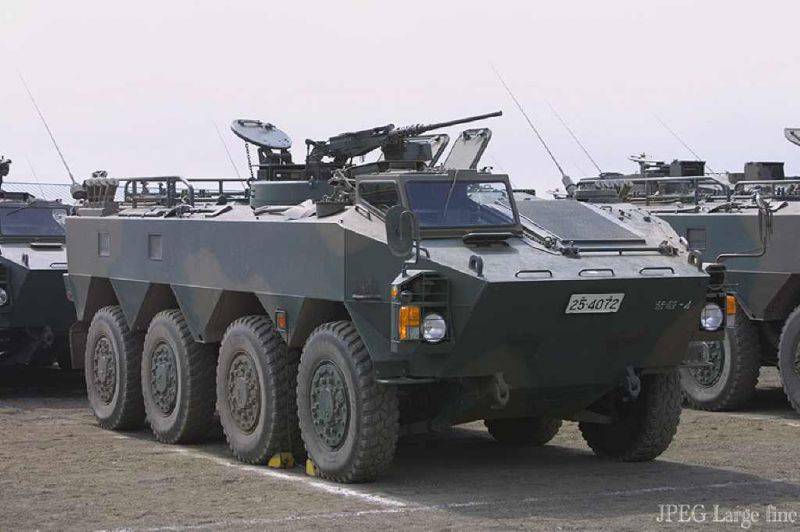
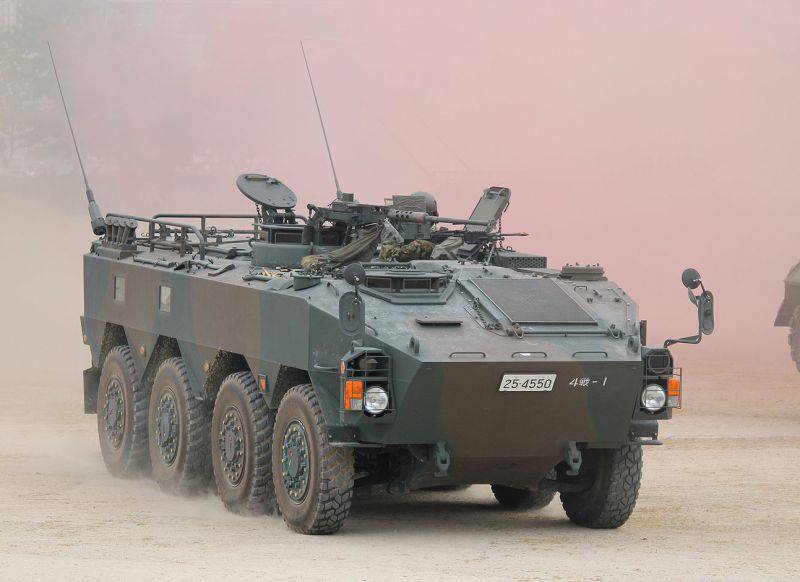
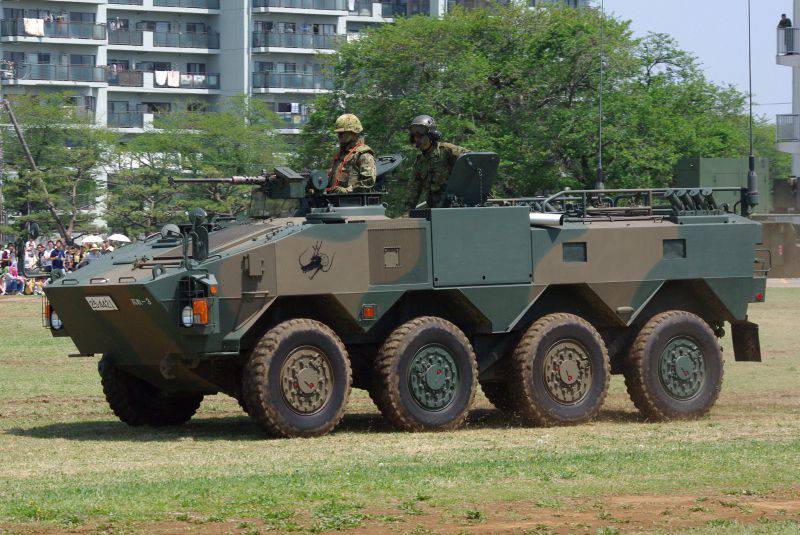
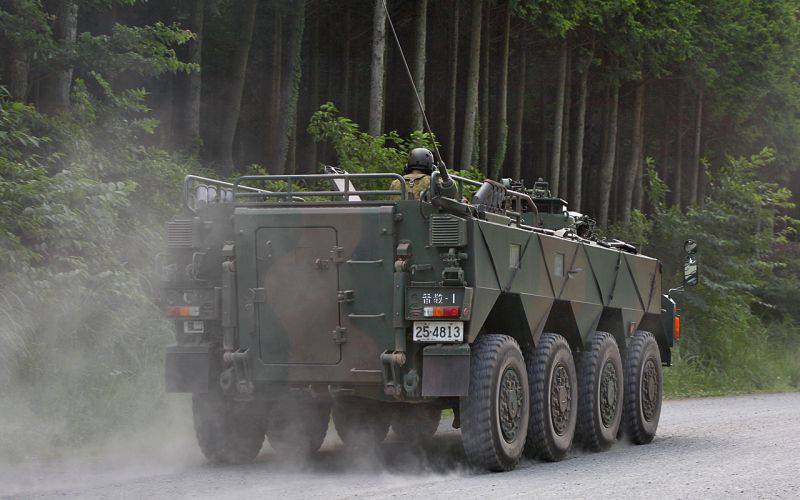
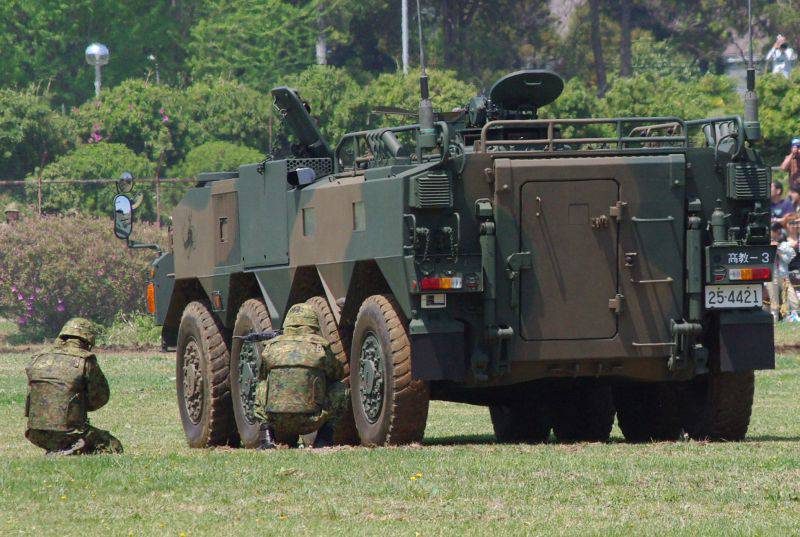
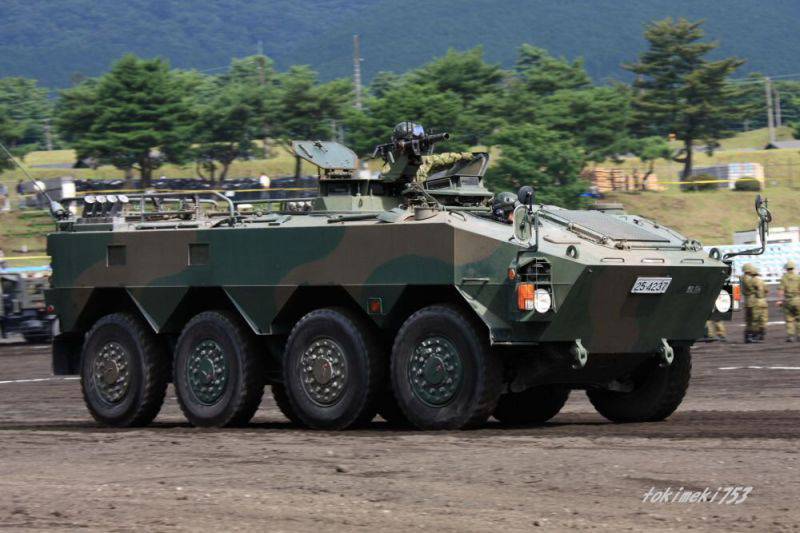
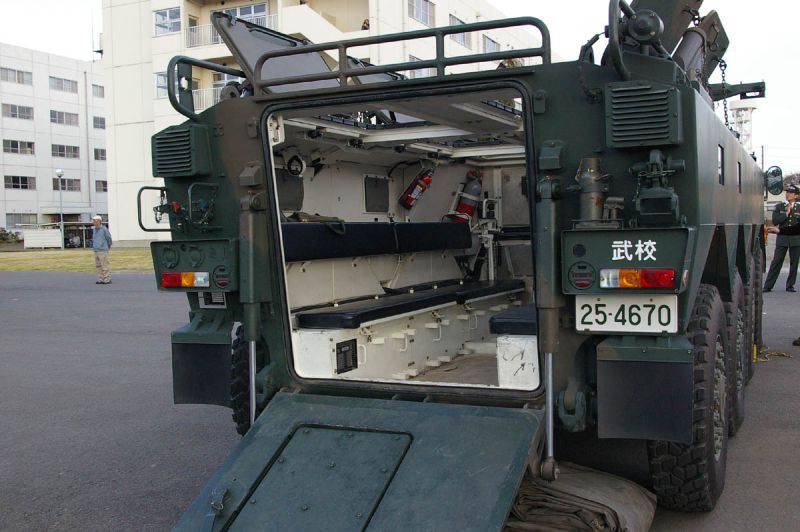
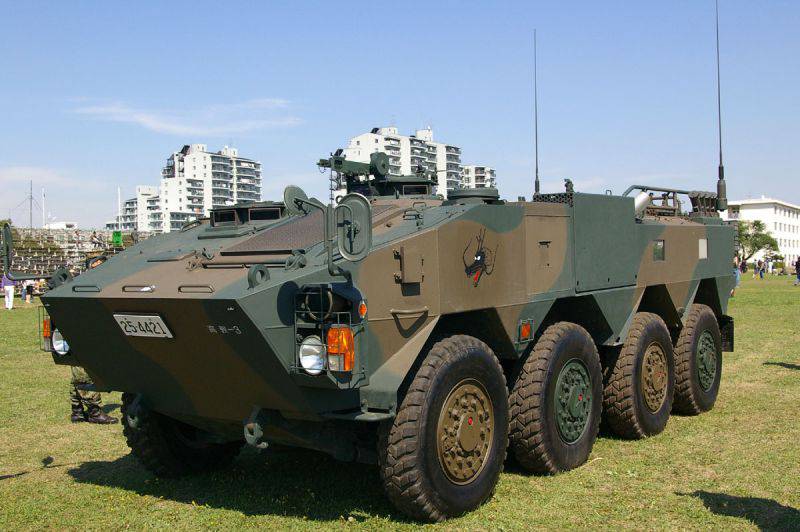
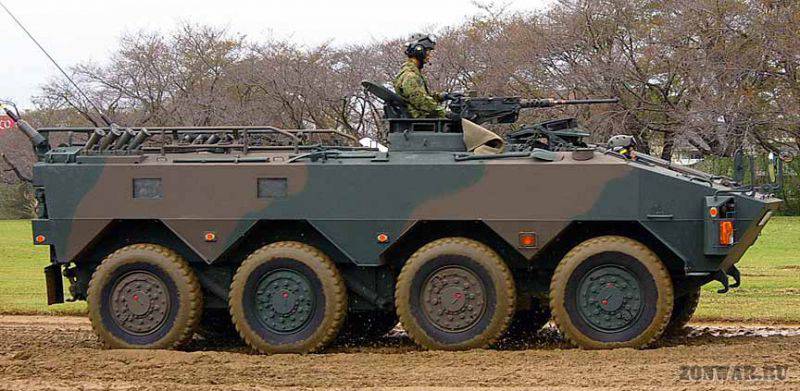
Information